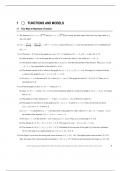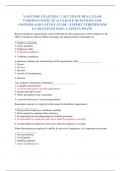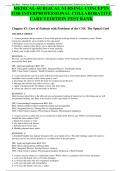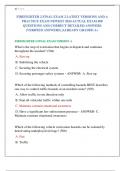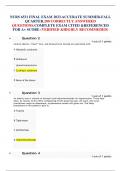Exam (elaborations)
Test Bank For James stewart daniel k clegg saleem watson instructor s solutions manuals for calculus early transcendentals 9th edition All Chapters Included
- Course
- Institution
- Book
Four Ways to Represent a Function 1. The functions () = + √2 − and () = + √2 − give exactly the same output values for every input value, so and are equal. 2. () = 2 − − 1 = ( − 1) − 1 = for − 1 6= 0, s...
[Show more]
